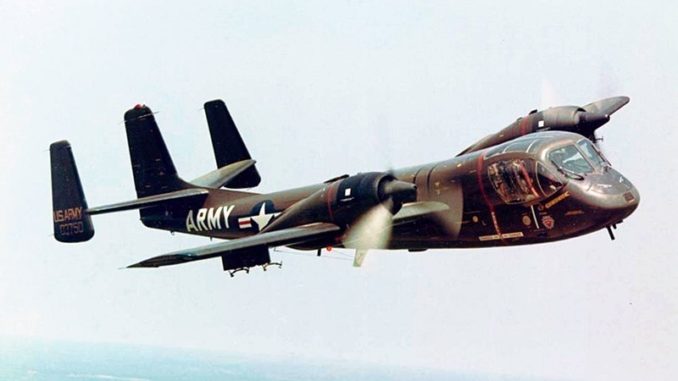
In November, 1967, over the A Shau valley of South Vietnam, a pair of U.S. Army OV-1A Mohawks were searching with infrared (IR) equipment for Viet Cong in the jungle below. Each OV-1 had a crew of two: pilot and co-pilot. Captain Ken Lee was the senior officer and most experienced Mohawk pilot. This was his second tour of duty in Vietnam. On a mission a few months prior, Lee had been hit in the side by a .51 caliber bullet fired from anti-aircraft guns. The bullet penetrated his flak vest, survival kit, and damaged his sidearm. He’d spent weeks recovering from the injury before returning to duty. Being a target for enemy ground forces comes with the territory when you fly a plane meant to fly low and slow.
The OV-1 Mohawk was designed to be an advanced observation, surveillance, and light ground attack aircraft. The GIs on the ground loved it because it could come to their aid quickly, firing at enemy troops in close combat situations. The OV-1 could carry weapon pods on underwing racks, including unguided 2.5 inch air-to-ground missiles and .50 caliber machine guns.
The Mohawks were cruising at a slow 170 knots, conducting their IR scan of the jungle, when Lee suddenly felt and heard the airframe hammered with bullets. “You got a MiG behind you!”, shouted his wingman over the radio in the other OV-1. The Mohawks were never meant for air-to-air combat. Although they were capable of aerobatic flight, they were no dog fighters. The pair of observation planes were outmatched by the lone MiG and in serious trouble. Lee ordered his wingman to break south, hoping that by splitting up at least one of them would survive this encounter with a killer.
The Mig-17 overshot Lee’s aircraft. The Soviet-designed fighter was capable of speeds up to 618 knots (711 mph) but had slowed down to about 275 knots in order to fire on the slow moving targets. That was the MiG driver’s first mistake. Overconfidence was his second.
The MiG turned to circle around and attack again, but in doing so he turned right in front of Lee’s fully armed Mohawk: mistake number two. In that instant Lee realized he had just one opportunity to survive. He fired most of his 38 air-to-ground missiles in two salvos, and raked the MiG with 100 rounds from the machine gun pods. Lee could see four of his missiles hit, and .50 cal. tracer rounds raking the fuselage of the MiG. The jet was on fire, and Lee watched it head down into a small valley that was socked in by clouds. Although he couldn’t see the MiG any longer, it seemed likely that it crashed. He just couldn’t be sure.
One of Lee’s duties was to brief Air Force officers on the ground targets found by his Army unit, the 131st Aviation Company. USAF Colonel Robin Olds mentioned to Lee that he’d heard through the grapevine that a Mohawk had shot down a MiG, and wondered if it was true. Lee told him it was, and how it happened. The next time they met, Olds invited Lee to the Officers Club at the Air Force base. Olds was commander of the 8th Tactical Fighter Wing, and fighter pilots were waiting for Lee at the club. Once there, Olds told Lee that he had secretly confirmed the downing of the MiG, and put Lee in a “MiG Sweep”, a kind of initiation ceremony fighter jocks did to celebrate a fellow pilot’s achievement of downing an enemy jet. Food and drinks were on the house and the Air Force treated U.S. Army Captain Ken Lee as one of their own.
(Note: most articles indicate this incident occurred in February of 1968, but that date is incorrect).
